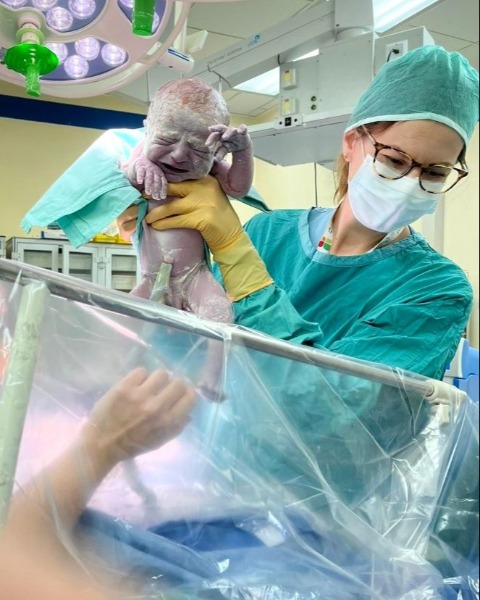Operative Obstetrics
Poster Session 3
(664) Occipital Posterior Vacuum Assisted Delivery: Primiparity's Impact on Maternal and Neonatal Outcomes

Anat Pardo, MD (she/her/hers)
OB/Gyn Specialist
Helen Schneider Hospital for Women, Rabin Medical Center, Petach-Tikva
Ramat Hasharon, Israel
Or Bercovich, BSc, MD
Helen Schneider Hospital for Women, Rabin Medical Center
Petach-Tikva, HaMerkaz, Israel
Inbal Navon, MD
Helen Schneider Hospital for Women, Rabin Medical Center
Petach Tikwa, HaMerkaz, Israel- SN
Shir Nahum Fridland, MD
Helen Schneider Hospital for Women, Rabin Medical Center
Petach Tikwa, HaMerkaz, Israel 
Noam pardo, BSc, MD (he/him/his)
MFM Fellow
Sheba Medical Center, Tel Hashomer
Ramat hasharon, HaMerkaz, Israel
Hadas Zafrir danieli, MD
Resident
Helen Schneider Hospital for Women, Rabin Medical Center
Petach Tikwa, HaMerkaz, Israel
Ohad Houri, MD (he/him/his)
Doctor
Rabin Medical Center
Tel Aviv, Israel, Israel- EH
Eran Hadar, Prof.
Rabin Medical Center
Petach-Tikva, HaMerkaz, Israel - SP
Sharon Perlman, MD
Helen Schneider Hospital for Women, Rabin Medical Center
Petach Tikwa, HaMerkaz, Israel
Primary & Presenting Author(s)
Coauthor(s)
Occipital posterior (OP) position presents unique challenges during delivery. Women with persistent OP facing vacuum-assisted delivery (VAD) are at a higher risk of failure and maternal and neonatal adverse outcomes. The precise impact of parity on the outcomes of VADs in the occipital posterior position remains an area of interest and requires in-depth investigation.
We aimed to explore the influence of parity on VAD outcomes in fetuses presenting in the OP position
Study Design:
Retrospective cohort study at a single tertiary center between 2012 and 2022 included 3,913 primiparous and 1,109 multiparous women who underwent VAD. The primary outcome was failed VAD. Secondary outcomes included maternal complications (postpartum hemorrhage, blood product transfusion, OASIS) and neonatal outcomes (umbilical cord pH < 7.1, 5-minute Apgar score < 7, NICU admission). Outcomes were compared between occiput anterior (OA) and OP vertex positions.
Univariate analysis and multiple logistic regression were performed to identify independent predictors of the primary outcome
Results: 977 parturients in the Primiparous OP group (prim-OP) and 411 in the multiparous OP group (multi-OP) were compared to 2936 parturients in the prim- OA and 698 in the multi- OA group. Prim-OP had higher BMI, higher rates of spontaneous pregnancy, and higher birth weight than prim-OA (p< 0.001; p=0.018; p=0.029, respectively). Additionally, women in the prim- and multi-OP groups were significantly younger (p< 0.001; p=0.039) than their equivalents in the OA groups. The second stage of labor was longer in both OP groups compared to OA (p< 0.001). The prim-OP group demonstrated a higher rate of failed VAD and composite adverse maternal and maternal-neonatal outcomes (adjusted odds ratio 2.039, 95% CI 1.270 - 3.274; aOR 1.273, 95% CI 1.028 - 1.57; aOR 1.335, 95% CI 1.099 - 1.621, respectively). This effect was not observed in the multiparous OP group
Conclusion: OP position during VAD in primiparous women is linked to higher failure risk and adverse outcomes for both mother and neonate, while no such effect is seen in multiparous women.

